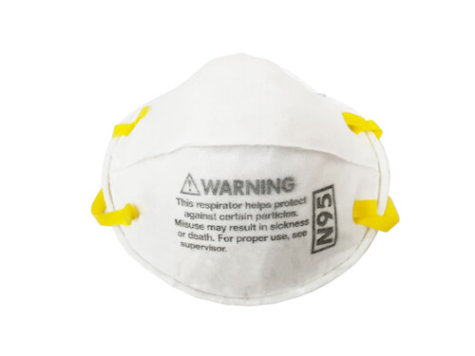
Respirator Fit Test
Qualitative respirator fit and pulmonary function tests
Respirator Fit Test

Employees working in a position regulated by OSHA Respirator Standard CFR 1910.134 must complete a respirator fit test at least once a year. Also, OSHA requires a fit test before working with a new mask, or after changes in the employee’s facial characteristics. Annual or more frequent tests ensure continuous protection against mask wear and tear and facial changes.
The Occupational Safety & Health Administration (OSHA) mandates Respirator Fit Testing (RFT) on the federal level and state level for most localities. Employers who fail to comply face fines of up to $7,000 for the first offense and $70,000 for repeated offenses. An RFT that averages under $100 per test can help employers avoid costly penalties while safeguarding their workers.
Mobile Health delivers RFTs in a number of ways:
1. By appointment at all seven Mobile Health medical facilities in New York City or one of our 2,700 national partner providers.
2. On-site at the employer’s place of business for large groups. To expedite RFTs for large groups of candidates, the Mobile Health team can deploy nationwide immediately to conduct on-site respirator fit testing. Click to submit your onsite fit-testing requirements and we will send you information within 24 hours.
3. All-in-one FIT KIT delivered to small businesses. Are you a small business owner with less than 50 employees? Order a FIT KIT for your office. The Mobile Health FIT KIT allows employers to easily perform fit testing in their own office or job site with guidance, support, and supplies from Mobile Health. Read FIT KIT FAQs or click to submit your Fit Kit testing requirements and we will send you information within 24 hours.
- Qualitative Respirator Fit Test
- Pulmonary Function Test
- Respiratory Hazards
Qualitative Respirator Fit Test

For job positions that require a mask, Mobile Health specializes in the affordable and effective testing procedure called Qualitative testing. In this test, the employee wears the respirator face mask along with a hood over their head. The tester then applies a series of test agents and gauges the employee’s ability to detect the smells and tastes. Individuals who detect these agents must have their mask adjusted or changed for proper fitting.
The test agents generally used include:
- Saccharin – a sweet-tasting solid aerosol.
- Isoamyl acetate – a liquid that produces a sweet-smelling vapor similar to bananas.
- BitrexTM – a bitter-tasting solid aerosol.
- Irritant smoke – a solid aerosol made of stannic oxychloride that produces hydrochloric acid when it comes in contact with water vapor.
Pulmonary Function Test
Many times, a respirator fit test is done along with a Pulmonary Function Test (PFT), also known as a Spirometry. Whereas the respirator fit testing ensures the right mask fit and model for the employee, the pulmonary function test actually gauges the employee’s lung health. Most often, employers use this test to develop a baseline to compare future against future tests.
Having this established baseline provides good protection when evaluating the cause of worker’s compensation claims. The baseline also helps to ensure employees have the adequate protection necessary to perform their job.
As with qualitative respirator fit testing, Mobile Health also offers pulmonary function tests (Spirometry) at all seven medical facilities in New York City and Long Island.
Respiratory Hazards
Employers must provide respirator masks and fit testing to employees whenever the work environment presents any of the following hazards:
- Dust and Fibers: Solid particles formed from the mechanical process. Examples: lead, asbestos
- Fumes: Solid particles that vaporize and condense in cool air. Examples: welding fumes
- Mists: Liquid droplets suspended in the air from spraying operations. Examples: paint spray mist
- Gases: Individual molecules in the air at room temperature. Examples: carbon monoxide
- Vapors: Gaseous substances, normally liquid or solid at room temperature. Examples: solvents
- Biological Hazards: Living organisms that can cause infections. Examples: viruses, animal waste
Different Assigned Protection Factors (APF) and Maximum Use Concentrations (MUC) developed by OSHA will determine the appropriate respirator mask to be used.

